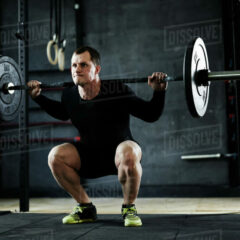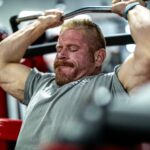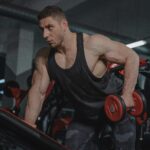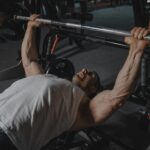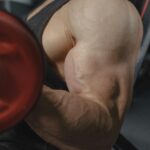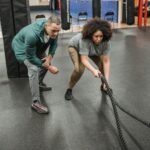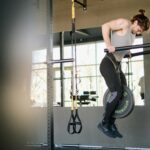https://weightliftingforpower.com/the-science-behind-effective-great-tricep-workouts/
The triceps, the key players behind your elbow extension, consist of three main parts: the long head, lateral head, and medial head. Each head plays its role in the movement and stabilization of the elbow joint, providing the power you need for everything from a firm handshake to a heavy bench press. Incorporating effective tricep workouts can further enhance these movements.
Recognizing how these tricep components work can transform your workout approach. The long head, running along the back of the arm, takes charge during overhead movements. Meanwhile, the lateral head on the arm’s outermost part shines when you push against resistance. Lastly, the medial head gets activated in almost every tricep exercise you perform, providing a constant undercurrent of support. This is essential for effective tricep workouts.
Triceps don’t just define the appearance of your arms. They are crucial for pressing movements, aiding in push-ups and bench presses. A strong tricep group can enhance your overall athletic performance, allowing you to lift heavier and perform longer without fatigue. Thus, engaging in dedicated tricep workouts is vital.
Many people believe that focusing on bicep curls alone will build impressive arms. However, the triceps comprise about two-thirds of your arm’s muscle mass. Neglecting triceps in your routine means missing out on arms that are both strong and balanced. Unlocking the potential of your triceps comes down to understanding their anatomy and incorporating innovative training strategies into your regimen.
The Science of Muscle Growth: How Triceps Respond to Training
When you’re training triceps, it’s all about triggering muscle hypertrophy, which is the process of getting those muscles to grow bigger and stronger. Hypertrophy happens when you break down muscle fibers during a workout and then let them rebuild bigger and stronger with rest and nutrition. Your triceps will thank you for a brilliant combo of resistance and repetition.
Focusing on the mind-muscle connection is crucial to getting the triceps firing. It’s about being aware and controlling your target muscle during each lift or extension. Concentrating on the triceps can improve activation, improving gains over time.
Effective tricep workouts aren’t just about lifting heavy. They focus on balancing volume (the number of reps and sets), intensity (the weight you lift), and frequency (how often you train). Fit rest days into your schedule to give your muscles time to adapt and grow, preventing overtraining.
Everyone’s genetics influence how quickly and effectively muscles grow, including the triceps. Some folks build muscle sooner than others due to their unique muscle fiber compositions and even hormone levels. Staying aware of how your body responds and adjusting your workouts can help you address your unique needs, promoting continuous improvement.
Effective Tricep Workout Techniques and Exercises
Mixing compound and isolation exercises keeps your tricep workout routine fresh and effective. Compound exercises hit multiple muscles simultaneously, making them time-efficient and practical for building strength. Meanwhile, isolation exercises zoom in on your triceps, giving them the focused attention they need.
Tricep Dips are a staple for a reason. They use your body weight, offering a simple yet challenging way to enhance the triceps. Close-Grip Bench Presses are superb for blowing up those muscles, too. They work your triceps harder than their wider-grip cousins. Then there’s the Overhead Tricep Extension, explicitly targeting the long head, offering depth and definition.
Adding variety through different exercises can prevent plateaus, keeping your muscles guessing and growing. By gradually increasing your weight or reps, you ensure continuous progress. Progressive overload is a term often used in fitness to describe this approach, and it’s instrumental in tricep training.
Resistance bands and good old bodyweight exercises present effective alternatives when gym equipment is unavailable. They maintain muscle engagement and offer unique resistance angles that differ from traditional weights, broadening strength capabilities.
Crafting a Results-Driven Tricep Training Program
Tailoring your tricep workout plan should start with clearly understanding your fitness goals and current fitness level. Balance is key — mixing workout intensity with sufficient rest periods. It not only helps with muscle recovery but also maximizes growth and performance.
Including rest days is pivotal. Muscles rebuild and grow during downtime, not while you’re pumping iron at the gym. Ignore the rest, and you risk hitting a plateau or worse, injury, which can set back your progress.
Fuel those growing muscles with the proper nutrition. Protein is your muscle’s best friend, helping with repair and building. Carbs give your body the energy it needs for those intense workout sessions, while healthy fats support overall body function.
Staying on track with your tricep goals means keeping motivation high. Consistency thrives on setting achievable goals and celebrating the small wins along the way. Adjust your routine to align it with your evolving fitness levels and interests. For long-term success, remain adaptable, and more importantly, enjoy the journey of building those well-defined triceps.
